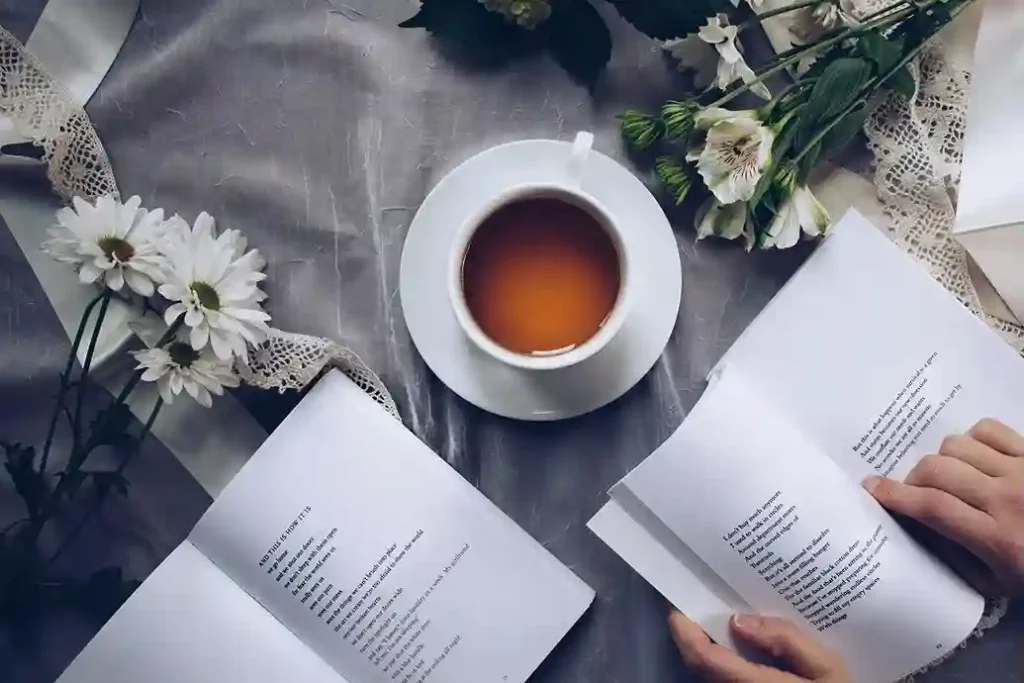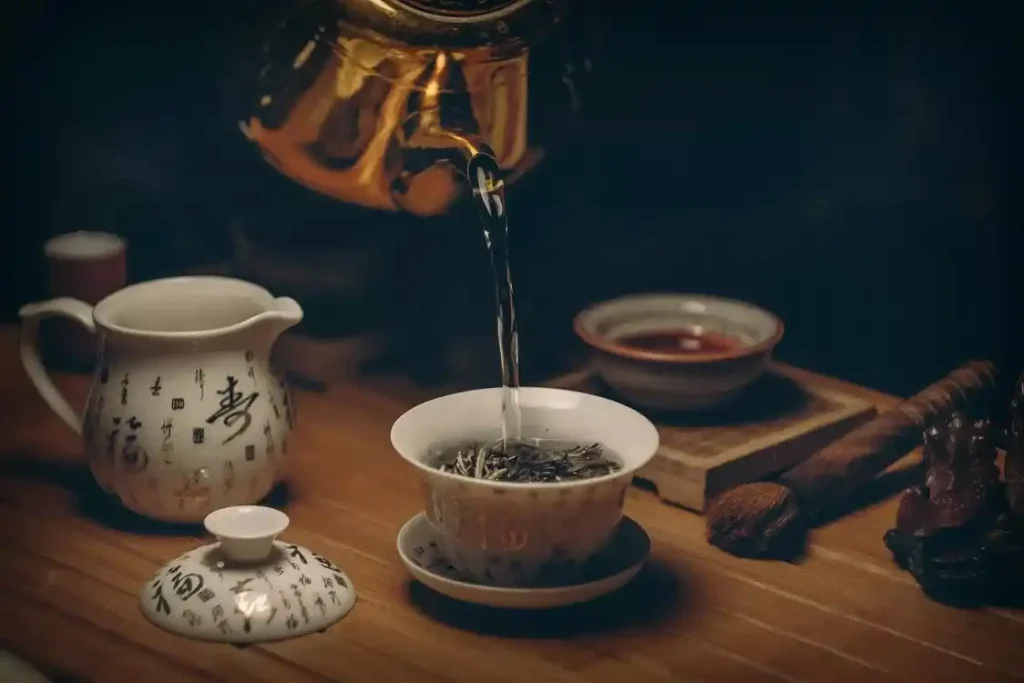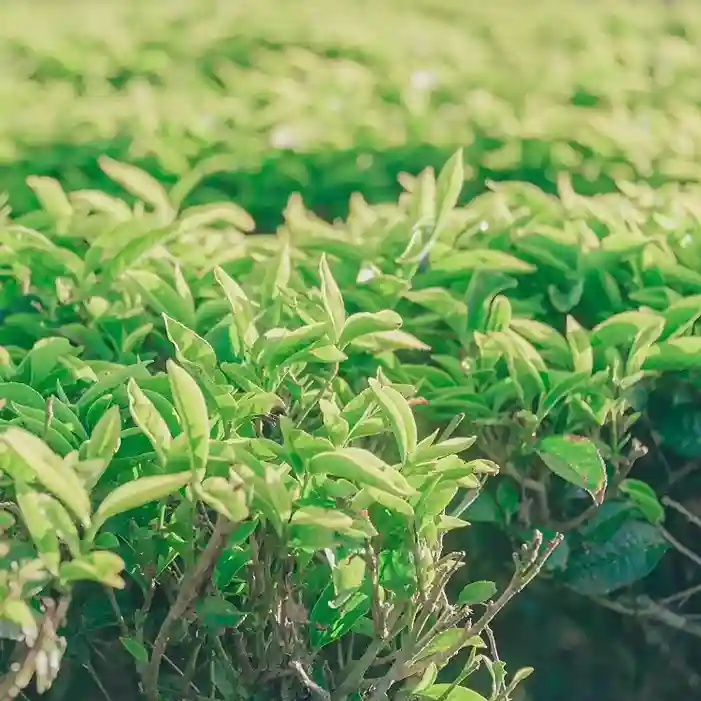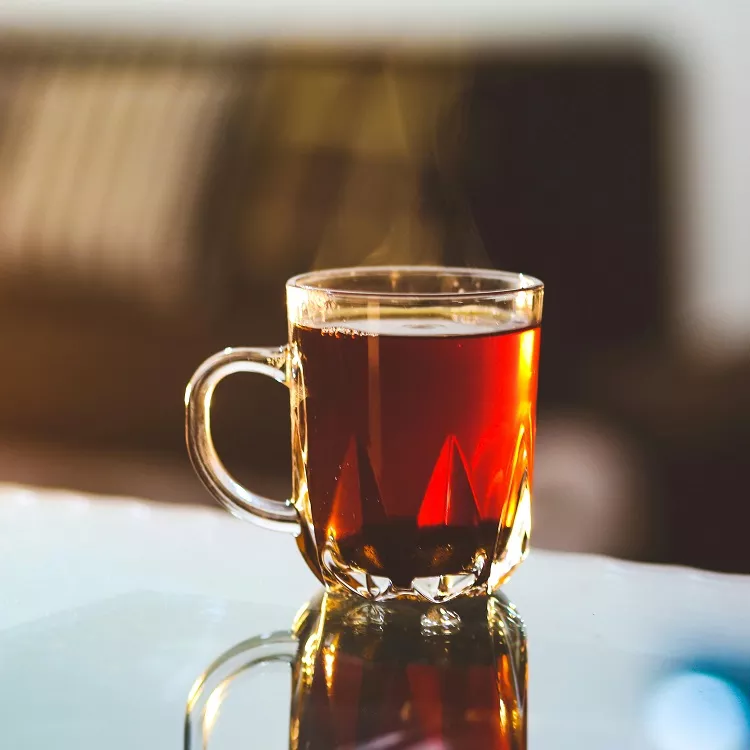In China, tea drinking has always been a part of everyday life. Not a fashion trend, not an exoticism, but a way to immerse yourself in your inner world, to be in unity with nature. It was drunk not for some instant effect, but for balance. They did not look for novelty in it, but appreciated the depth of the drink, which was revealed gradually.
For centuries, tea drinking has been closely associated with philosophy. The process of brewing is inherently very meditative: calm movements, a focused gaze, a steady flow of water. No rush, no fuss. Over time, brewing turned into a pleasant stop, a return to oneself, an opportunity to separate from the daily noise.
And even now, when Chinese tea is drunk all over the world, it retains its essence without adapting to trends. It doesn’t shout about itself, but remains what it has always been: a source of silence, clarity, and inner peace.
Basics of Chinese tea production
The quality of Chinese tea is shaped by the intersection of several key factors, including terroir, variety and harvest season. Terroir is a set of natural conditions: altitude, soil type, climate, and humidity, which affect the chemical composition of the leaves and, accordingly, the aroma and taste of the finished product. Different varieties of tea bushes differ not only genetically, but also in their ability to adapt to certain conditions, which determines their flavor characteristics.
The seasonality of tea harvesting is critical: spring harvesting, especially from the first buds, produces the most delicate aroma and pure flavor profile. In summer and autumn, harvesting is more intensive, but the leaves themselves have a different chemical composition: they are denser, with a lower concentration of essential substances, but are rich and stable. The choice of plant parts is also important: young leaves and buds have a higher concentration of essential oils and antioxidants, which gives the tea more flavor and makes it healthier.
The production process involves several sequential stages: drying, fermentation, twisting, drying and sorting. Drying reduces the moisture content of the tea leaves and activates the enzymes necessary for further fermentation. During fermentation, catechins and polyphenols responsible for flavor are oxidized. This oxidation leads to the formation of theaflavins and thearubigins, which form deeper flavors and colors. At this stage, the type of tea is determined: green, oolong or black. Twisting gives shape to the leaves and helps release flavors. Drying stabilizes the product by stopping enzymatic processes.
Consistent processing of tea leaves requires precision and experience, because even minor deviations at any stage have a significant impact on the final quality. It is thanks to this precise process that Chinese tea retains its uniqueness and versatility.

Classification by fermentation
After harvesting, a delicate chemical process begins in the tea leaf. When the cell structure is disturbed, polyphenols come into contact with air, and oxidation occurs. It affects everything – the aroma, taste, color of the infusion. Different varieties react differently to fermentation.
Green tea retains its natural freshness and lightness because fermentation is stopped at the beginning. Oolongs are partially changed. The variations in these changes create a whole range of teas, from light, floral infusions to denser, deeper, nutty or fruity drinks. To make black tea, the tea leaves must undergo complete oxidation and become soft, warm, and full-bodied in flavor. Pu-erh fermentation lasts for months and even years, involving not only enzymes but also time, moisture, and microflora.
The degree of oxidation directly affects the temperature and brewing time. The more lightly processed the leaves are, the more delicate the temperature and the less time it requires. Intense, rich types that have undergone a long fermentation process, on the other hand, open up better in hot water and retain their richness even after several brews. The better you understand how the tea leaves have changed, the more accurate you feel about how to handle them.
| Type of tea | Fermentation %. | Leaf fermentation process | Taste features | Optimal brewing temperature and time |
|---|---|---|---|---|
| Green | Minimal, 0-5%. | Quickly steam or fry to avoid oxidation | Fresh, grassy, light astringency | 75-80 °C, 1-3 minutes |
| Yellow | Low, 5-12%. | “Ripens” in the air, light languor | Softer than green, with notes of caramel | 80-85 °C, 2-4 minutes |
| White | Low, 5-15%. | Naturally air-dries without curling | Delicate, sweet, light floral note | 75-85 °C, 5-7 minutes |
| Oolong (light) | Semi-fermented, 15-40% | Light oxidation, partially curled | Delicate, floral | 80-85 °C, repeated short brewing |
| Oolong (dark) | Semi-fermented, 40-70% | Stronger oxidation | Intense, fruity and woody notes | 85-95 °C, repeated brewing |
| Red | Full, 80-95% of the time | Complete oxidation | Soft, sweetish, caramel color of the infusion | 95 °C, 3-5 minutes |
| Shu Puer | Post-fermented, 100% | Wet fermentation with microbes | Earthy, rich, dark | 95-100 °C, rinsing, repeated brewing |
| Shen Puer (young) | Post-fermented, 10-15% | Initial natural fermentation | Light, fresh | 85-90 °C |
| Shen Puer (old) | Post-fermented, 60-90% | Long natural maturation | Rich, complex, dark | 90-95 °C, rinsing, repeated brewing |
Green tea is the embodiment of freshness and purity
The symbol of freshness, purity and natural harmony has a thousand-year history. Since ancient times, Chinese tea masters have gradually perfected processing technologies. The main achievement was minimal fermentation: after harvesting, the leaves are quickly subjected to heat treatment (by steam or roasting) to stop oxidative processes. This allows them to retain their natural green color, fresh flavor and nutrients.
Among the most famous varieties are Japanese sencha, Chinese lunjing, and Taiwanese ganpowder, each of which has unique flavor and aroma characteristics that depend on the region of cultivation, climate, and processing method. Green teas are rich in catechins and other antioxidants that help protect cells from aging, support the immune system and improve metabolism.
Traditional brewing methods include Chinese gongfu-cha, which involves several short brews in small kettles with water at a temperature of about 75-80°C, and the European method, which involves longer infusions in larger cups. To preserve the aroma and beneficial properties, it is recommended to store raw materials in a dry, dark, and airtight container, avoiding exposure to moisture and light.
The culture of green tea consumption is not just a ritual, but a conscious immersion in the world of nature and inner balance.
Yellow tea – an imperial drink with a mysterious technology
Yellow tea is one of the rarest types of tea, which has long been considered an imperial drink. Its history dates back to the Tang Dynasty, and legends tell of monks who discovered a special processing technology that gives calmness and clarity of mind.
The main difference between yellow tea is the unique process of meng huan, or yellowing. After warming up, the leaves are wrapped in a damp cloth, where it is slowly fermented. This method eliminates bitterness and gives the tea a mild, deep flavor and golden color.
The most famous varieties:
- Junshan Yinzhen (premium variety from Hunan)
- Huoshan Huangya (from Anhui Province)
- Menghuan Huang (from Sichuan Province)
Brew yellow tea with water at 70-80°C for 1-2 minutes. It is very sensitive to storage conditions, so choose an airtight container and keep it away from light and moisture.
In Chinese culture, it is a symbol of nobility, harmony, and spiritual depth. For emperors, monks, and scholars, this species embodied sophistication and spiritual depth.
White teas – natural delicacy in a cup
White tea is one of the most delicate and least processed types of Chinese tea, known for its natural purity, delicate flavor and medicinal properties. The first mention of it dates back to the Song Dynasty (960-1279). Back then, it was considered a drink of emperors and doctors.
In traditional Chinese medicine, white leaves were valued for their ability to reduce fever, cleanse the body, and maintain youthfulness and eyesight. Due to its high antioxidant content, it is still considered a “longevity tea” today.
White teas are characterized by minimal processing: only natural withering and light drying. This process preserves the natural structure of the leaf, flavor and nutrients. This production method is the embodiment of the philosophy of minimal interference in the natural course of things.
Classification of white teas by variety:
- Bai Hao Yin Zhen (silver needles) is the most exquisite variety of young buds.
- Bai Mudan (white peony) is a combination of buds and young leaves.
- Show Mei (old man’s eyebrows) – coarser leaves, more intense flavor.
Aged white tea is also appreciated, as it acquires a deeper, sweeter flavor over time.
White teas, including silver needles, are brewed with water at a temperature of 70-80°C for 2-5 minutes. This type of tea is very delicate and requires soft water and careful handling. Store the delicate leaves in a dry, dark place in an airtight container.
In Chinese culture, this type of tea symbolizes purity, tranquility and natural wisdom. It is a drink for those who seek harmony, meditation and a true taste of nature.
Oolong – the perfect balance between green and red
Oolong, or black dragon tea (translated from Chinese as black dragon), is a semi-fermented type that combines the freshness of green tea with the depth of red (black) tea. In the philosophy of tea, it symbolizes the balance between yin and yang, between lightness and richness.
Partial fermentation (from 10 to 70%) gives oolong teas a multifaceted aroma and flavor. They embody the idea of harmony and perfect balance.
Oolongs are divided into light and dark (heavily roasted). There is also a classification by geography of production, as each region has its own style, flavor, and technology.
Utesni (Yancha) grows in the mountain gorges of Wishan (Fujian). They have a mineral, rich flavor. The most famous are: Da Hong Pao (Big Red Robe), Shui Xian (Water Fairy).
Oolongs from Anxi are delicate, with floral and fruity notes. Teguanyin (Iron Goddess of Mercy) is a legendary variety that, according to legend, was given to a peasant for his faith and good deeds.
Guangdong oolongs, the oolongs from Phoenix Mountain, are called Dan Tsun or “lonely bushes”. Each bush has a unique and inimitable flavor: from peach to flowers.
Oolongs from the mountainous regions of Taiwan, in particular Alishan and Lishan, are known for their light, creamy flavor and orchid aroma. Grown at an altitude of more than 1000 meters, they are considered one of the most exquisite.
The production of oolong teas involves withdrawal, twisting, fermentation, and roasting. Oolong teas contain amino acids, catechins, caffeine, and trace elements that are beneficial for digestion, heart, and metabolism.
They are brewed repeatedly, in short spills, with water at 85-95°C in small cups. The taste is revealed gradually, with new shades appearing with each brew.
Red tea – an oriental classic with full fermentation
In China, red tea, known as Hong Cha, is a part of the cultural heritage and one of the most common types of tea in the world. Ever since the active tea trade between China and the West in the 17th and 18th centuries, it has been called black in Europe for the dark color of the dry leaf, and red in the East for the color of the infusion.
It is made from large or medium-sized tea leaves. The production process includes withering, twisting, full fermentation, and drying. It is the full fermentation (up to 90-100%) that gives the infusion its deep amber color and mild flavor with notes of caramel, honey, fruit or dried fruit.
Among the most famous varieties: Qi Meng Hong Cha from Anhui Province (has a delicate aroma with a slight smokiness), Dian Hong from Yunnan (a thick infusion with hints of chocolate), Lapsang Souchong (has a distinct smoked flavor due to the drying of the leaf over pine smoke).
They are brewed with water at a temperature of 90-95 °C, and the infusion time is 2-4 minutes, depending on the variety. During the gongfu-cha ceremony, it is brewed in short spills up to 6-8 times.
Store red types in a tightly closed container in a dry, dark and cool place, away from spices and moisture, to preserve the aroma and flavor.
Pu-erh is a drink with character
Pu-erh is a unique Chinese tea that is post-fermented, that is, fermented after the main processing. It is not only drunk, but also collected, because pu-erh changes over time, like wine, gaining depth, softness, and complex flavor.
There are two main types of puerh: shen and shu.
Shen Pu-erh (raw) is a traditional pu-erh that ages naturally. Its taste gradually transforms over the years from grassy and tart to deeply sweet, earthy, or fruity. This tea can be stored for decades, gradually revealing itself in a new way.
Shu Pu-erh (mature) emerged in the 1970s as a result of attempts to speed up the aging of shen pu-erh. It is made using the “wosh dui” method of rapid fermentation: tea leaves are moistened and left in piles to ripen, resulting in a soft, rich flavor with hints of wood, earth, cocoa, or prunes in the early stages.
Shen Pu-erh has a brighter, more multifaceted flavor and takes time to mature, while Shu Pu-erh has a mature, mild profile immediately after production and is better suited for introducing pu-erh.
Both types are well suited for gongfu cha, or repeated brewing. The water is taken hot (95-100 °C), and the infusion time is short (10-30 seconds), depending on the strain.
Pu-erh loves air, stable temperature, lack of moisture and odors. Especially shen, which needs time and natural ventilation to develop. Shu is less demanding, but also appreciates stable conditions.
Over time, the pu-erh opens up, the flavor evolves, and each cup becomes a page of a living history that is written year after year.

Practical aspects of consumption
Real Chinese tea differs significantly from ordinary store-bought tea in terms of quality and method of preparation. Usually, stores sell instant drinks: finely chopped or granulated tea that quickly gives off color and flavor, but is inferior in depth of flavor and versatility of aroma. Chinese teas are whole leaves, often hand-picked, whose profile reveals itself gradually over the course of repeated brewing.
One of the most interesting phenomena is the so-called “tea intoxication” – a mild, pleasant effect. It is caused by a combination of caffeine, theanine, and other bioactive substances in the drink. Unlike the caffeine high from coffee, this state calms you down and at the same time gives you energy, helping you to focus.
The right water temperature is key to bringing out the flavor of different types of tea. Green tea is typically brewed with water heated to 70-80 °C to avoid bitterness, oolong tea is brewed at 85-95 °C, and black and pu-erh tea is brewed at 95-100 °C, as they require hotter water to fully develop their flavor.
Traditionally, the raw materials are poured with water several times, and each brew has its own characteristics: the first one can be short to wash the leaves, and subsequent brews are longer, with a longer infusion. The number of infusions depends on the type and quality of tea, some can be opened up to 7-10 times.
The choice of utensils is also an important aspect. The most popular are the gaiwan or Yixing teapot, which allow you to control the brewing process and preserve the flavor better.
Tea should be kept in a dry, cool place, protected from light and odors. Green teas are best consumed quickly, while pu-erh can take years to mature if the storage conditions are right.
This is not a drink to be brewed in a hurry. It’s an art that gives you a taste experience, you just need to approach the process correctly – with patience and attention.
Culture and philosophy of Chinese tea
Tea ceremony, as a spiritual practice, is a central element of Chinese tea culture. In the traditional gongfu cha ceremony, every movement has meaning: from the choice of water to the method of brewing. This is not a mechanical process, but a kind of meditation, a path to calmness, awareness, and unity with nature.
In China, there are traditions of drinking tea at different times of the day. The morning drink wakes you up and sets you up for the day. In the afternoon, your favorite decoction supports energy and communication. In the evening, it is consumed to calm and reflect. Philosophical conversations and family meetings are often held over tea. Although drinking tea alone, dissolving in the moment, is a separate pleasure.
Modern trends and innovations do not ignore the ancient culture. Young people are combining traditional brewing with new formats: cold infusion, bottled tea, and combining it with fruit or milk. However, the main idea – respect for the origins, nature, peace and harmony – remains.
Finally, tea drinking is a form of meditation and a way of self-discovery. It teaches you to slow down, listen to yourself, let go of disturbing thoughts about the past and future, and focus on the present moment. With the help of tea, you can learn to be present in the here and now, notice the subtle nuances of life, and better understand your inner state.
Practical recommendations for beginners
The journey into the world of Chinese tea begins not with perfect utensils or rare varieties, but with a sincere desire to experience the aroma, taste, and state of calm it gives. You should not rush to immerse yourself in all the intricacies of a complex ceremony. To begin with, you just need to learn to listen to yourself and focus on the drink.
To understand the difference between types of tea, you should choose a few basic varieties. A good start would be green (for example, Long Jing or Bi Luo Chun), fresh and light; oolong (for example, Te Guan Yin), with a deep aroma; red (Hong Cha, such as Zhen Shan Xiao Zhong), warm and rich. It is better to buy tea in small packages and gradually discover new flavors.
Find a balance between ritual and everyday life. Chinese tea has a deep cultural tradition, but its naturalness is its true strength. The morning drink can be simple and quick, while the evening drink can be long and meditative. The ritual is born not from form, but from attention: watch the water unfold the leaves, the aroma bloom in space.
Remember the philosophy of gradual cognition. Tea teaches patience. It does not reveal all its secrets at once. With each new brew, you will discover something new in the drink, in the moment, in yourself.
Over time, you will develop your own tea preferences. Some people will love deep shen pu-erhs, while others will prefer floral oolongs. It’s a natural path with no right or wrong choice. There is only your sense of harmony, which is born in the quiet sound of a cup of hot tea.

Frequently asked questions
The fragrant world of Chinese tea is full of traditions and legends.
After the first impressions, admiration and enthusiasm, questions of various kinds arise, from practical to philosophical. Below are the answers that will help dispel doubts and make your acquaintance with tea more profound and conscious.
1. What is the difference between different types of Chinese tea?
The main difference is the degree of fermentation.
Green tea is almost not subject to oxidation, and therefore retains its freshness and herbal notes.
Oolong is a semi-fermented tea bush leaf. This type combines the lightness of green tea with the depth of red tea.
Red (in the Chinese tradition, “Hong Cha”) has a warm, rich flavor.
And pu-erh is a special category. It matures over time, acquiring a deep, earthy harmony.
2. Is it true that Chinese tea should be brewed only in special dishes?
This is one of the most common myths. Although a gaiwan or Yixing clay teapot allows for better flavor development, the true essence of tea is not in the utensils, but in the attention to the process. Start with what you have at hand. Even a simple cup can become a guide to the world of flavor.
3. Can I enjoy teas from China every day?
Yes!!! It’s great for daily consumption. The main thing is to learn to listen to your body. In the morning, it is better to drink types that will give you maximum energy (green or red), and in the evening – soft oolongs or aged shen pu-erh.
4. What types of teas should a beginner choose?
Experts advise starting with light and flavorful varieties, such as Longjing, Te Guan Yin, or Dian Hong. They reveal the classic Chinese character of tea without requiring complicated brewing.
It’s not just about a drink, it’s about a state. It teaches calmness, concentration, and the art of enjoying simple things in the moment.
Conclusions.
Chinese tea is a true cultural world heritage that combines art, philosophy and a deep respect for nature. Every drop of it bears the imprint of time, history and the human soul. That is why it occupies a unique place in world culture. It is a true symbol of harmony, spiritual balance and concentration. It unites people of different eras and continents, teaches us to see beauty in the ordinary, to taste silence and appreciate natural simplicity.
In today’s world, where life often resembles an endless race, preserving tea traditions is not only an act of cultural memory, but also a way to restore inner balance. Chinese tea culture is a true wisdom that brings people back to a sense of kinship with nature. It teaches respect for the process: from growing a bush to calmly brewing the leaves. The philosophy of mindfulness, patience, and gratitude live in every gesture, in every sip.
At the same time, tea is a living art that never stops evolving. Its spirit adapts to modernity while maintaining its authenticity. Young craftsmen experiment with new ways of brewing tea, and experienced connoisseurs pass on their knowledge to the next generations, creating a bridge between the past and the future.
And the most important thing. There is no single right way to drink tea: it is unique for everyone. It is a path of inner discovery, a journey to harmony between body and spirit. So allow yourself to plunge into this world slowly, attentively, and with gratitude.
Let every cup of your favorite drink be a reminder of the beauty of the moment, the power of calm and the eternity of traditions that have warmed the hearts of people around the world for centuries.






